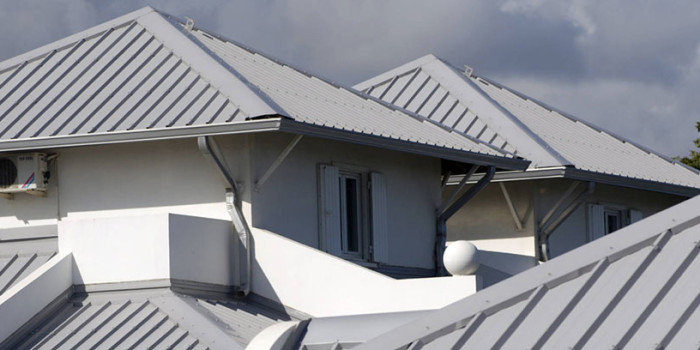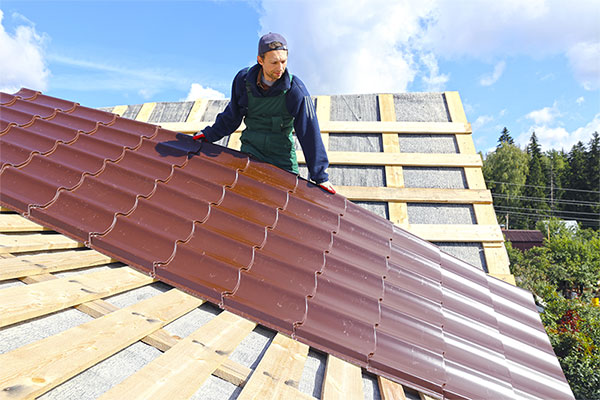How Your Home’s Roof Can Affect Energy Consumption and the Environment

Not many make the connection between roofing, energy and the environment. For them, a roof provides protection overhead, keeping the elements out. So, for as long as a particular type of roofing material will satisfy that specific requirement, it is acceptable to use. Little do they know that the roof they choose can affect their home’s energy consumption and carbon footprint. This is why careful thought should go into choosing the best roofing material.
- Is it suitable for the climate in your location?
- Is it capable of keeping the heat out during summer, and the cold during winter?
- Is it suitable with the design of your home’s roofing system?
- Is it environment-friendly?
Clearly, the first roofing material you see may not always turn out to be the best choice.
The impact of your roof on energy
How energy is affected by your choice of roofing system and material depends on the climate, roof orientation, thickness of insulation, surface reflectivity, and roofing maintenance.
Take flat or low-slope roof, for example.
Because of its design, it gets maximum exposure from the sun, which can affect the cooling load and costs of a building, cranking them up to high levels. The roofing materials used are also typically black, which absorb solar energy, instead of reflecting it. This causes the roof temperature to go higher than the ambient temperature by as much as 100 F. When that much heat is conducted to the conditioned space, the cooling system would have to work twice as hard, cranking up its energy consumption. In the event that the insulation gets wet due to a leak, its thermal resistance is destroyed, resulting in energy inefficiency and deterioration of roof integrity.
This is not to say that a flat or low-slope roof is a bad option overall, only that it won’t work in all areas.
The impact of your roof on the environment
These days, choosing a building material with little to no negative environmental impact should be a priority. Environmental preservation is a growing concern, and one that can be addressed when everyone opts for environment-friendly building materials. This is because everyone that is connected to a specific material, one way or another, would be forced to adhere to environmental requirements and respect eco-friendly advocacies, if they want to remain operational.
The sustainability of a roof tile, for example, takes into account several factors – the manufacturing process, transportation and logistics, coverage, replacement, recyclability, and insulation requirements.
A roof tile that uses mined raw materials already destroys the environment from the start. After all, mining damages the landscape and releases emissions that are harmful to the environment. If it needs to be ordered overseas or from a distant location, transportation would demand higher fuel consumption. It gets even worse when the roof tile is heavy, as it requires more energy and fuel to move. It can also put more stress on a building’s structure.
A less durable roofing tile will also have an impact on the environment, because it needs to be replaced sooner than later, which will bring about the un-sustainable cycle of manufacturing and transportation and logistics. If it has poor insulation qualities, your heating bills would be, undoubtedly, high.
Choosing an energy and environment-friendly roofing material
A roof that follows sustainable principles:
- Is energy efficient. It may be expensive initially, but you will be able to recover costs through energy savings within a short span of time, typically three to five years.
- Has low to no impact on the environment. It is made from materials that are eco-friendly and used on a well-designed roof system.
- Renewable instead of removable. At the end of its service life, a roof is recoated or renewed, instead of being completely removed and replaced.
A roof with reflective surfaces:
- Is coated white or light-coloured to reduce solar absorption by up to 30%.
- Has a surface temperature that is only 15 to 20 F higher than the ambient temperature.
- Reduces cooling load demands at 10 to 15% percent at its peak.
- Extends a roof’s lifespan, because reflective coatings provide protection from ultraviolet light that can weaken roofing materials.
The best roof insulation:
- Limits the amount of heat that goes to or from the building interior through the roof.
- Achieves a balance between heat insulation and stress on the roof membrane or thermal shock.
- Its thickness keeps thermal shock to a minimum or acceptable levels.
The pros and cons of most common roofing material available
Slate
Pros:
- It is a naturally occurring material that is associated with little heat and fewer factory emissions
Cons:
- Sourced by splitting slate, which generates incredibly high amounts of waste.
- It is not always uniform, which increases the risk of leaks or heat loss
- It is heavy and may have to be imported.
Clay
Pros:
- It is highly abundant and extremely long lasting.
- Helps reduce environmental impact or tile replacement
- It can be re-used as whole or broken tiles.
Cons:
- Extracting clay is harmful to the landscape.
- It is difficult to recycle.
- Increases transport emissions because of its bulk and weight.
Wooden shingles
Pros:
- It is eco-friendly when sourced from a sustainable producer and contractor
- Grown using replanting harvested forest practices
Cons:
- Shorter service life, requiring frequent maintenance
- Has high hidden energy cost when imported
- Has high risk of fire
- May be treated with harsh chemicals
Concrete
Pros:
- Durable and recyclable, especially when crushed.
Cons:
- Use high levels of energy during the manufacturing process.
- Heavy enough to require more transportation energy
- Extraction of raw materials can damage the landscape.
Steel
Pros:
- Steel roof tiles are largely made from reclaimed material
- Some types are 100% recyclable at the end of their service life
- Lightweight and durable, reducing maintenance and replacement needs
- Transportation costs are low
- Its slim profile allows for easy addition of extra insulation
- Helps keep energy bills very low
Cons:
- Initially expensive
- Noise that result from rain or hail hitting on the roof
- At risk of dents, scratches, marring and lighting.
Asphalt shingles
Pros:
- It can be reinforced with fiberglass or organic materials such as organic felt.
- Available in different levels of fire resistances, with Class A being the most fire-resistant.
- Fiberglass shingles are more fire-resistant than the organic variety.
Cons:
- Requires careful inspection to determine if asphalt shingles comply with recommended standards.
Green roof
Pros:
- Includes vegetation as part of the roof system, using a layer of dirt or an artificial growing medium.
- Shields the roof from ultraviolet rays, providing a layer of insulation.
- Plant life provides evaporative cooling for the building
- Solar heat gain and temperature swings are reduced if not eliminated.
- Helps control stormwater runoff.
Cons:
- More complex to build and maintain than a conventional roof
- Requires a drainage system to be installed between the roof deck and the growing medium to prevent clogging.
- Makes it difficult to find leaks amidst the plants and growing medium.
- Adds additional weight and stress on the roof structure.
Based on the factors listed above, you can easily narrow down your options. Steel and asphalt shingles cut the grade in terms of energy saving and environment-friendliness. But roofing material only makes up one aspect of an entire roof system. This means you need to take into account the other basic components of a roof.
The components of a roof system
- Roof covering is any material used to protect the roof sheathing from the weather.
- Sheathing refers to boards or sheets of material that cover a house or building, and fastened to the roof rafters.
- Roof structure provides support of the sheathing, and may come in the form of rafters and trusses.
- Roof drainage is a design feature that ensures a roof can shed or drain excess water.
On top of all these, you need to ensure the roof system has proper ventilation, which will minimize, if not completely eliminate, heat and moisture build-up in attic area that will cause the insulation to become ineffective, for shingles to buckle, and for sheathing and rafters to rot. So never block sources of roof ventilation, such as soffit vents and louvres, even in winter.
When an attic is properly ventilated, structural damage and reduced integrity of roofing material caused by moisture will be prevented. Energy consumption is also reduced, while the comfort level of the rooms below the attic is increased.
The impact of insulation on proper attic ventilation
There are many factors that can affect attic ventilation, including a building or home’s location, structural condition, atmospheric humidity and the dimensions of an attic. So taking them into account during insulation installation will help achieve proper attic ventilation.
- Add a layer of gap-free insulation on the attic floor, reducing heat gain or loss.
- There should be a distance of, at least, 1 inch between roof sheathing and insulation.
- Keep moisture from rising into the attic by adding a vapour retarder under the insulation, and next to the ceiling.
- Air must be able to freely pass in and out of vented spaces.
Importance of a roof contractor
Given the many factors that must be considered to create an energy-efficient and environment-friendly roof, you should not hesitate to hire a contractor for any roofing job, whether for new construction or otherwise. Southern Cross Roofing can help you choose and build a roof that saves you money and supports sustainability. We’ll provide you the best advice on roofing needs, and the high-quality services to go with it, from roof repair to gutter care and maintenance.
Talk to us today, and we’ll help improve your roof’s impact on energy and the environment.


Comments are closed.